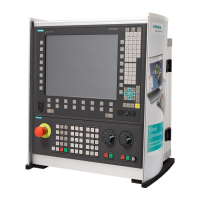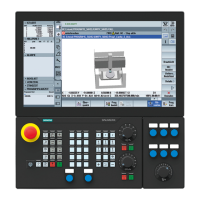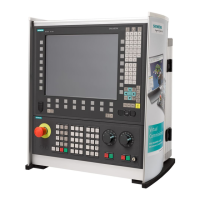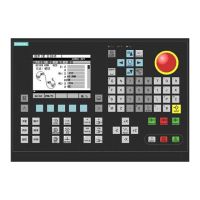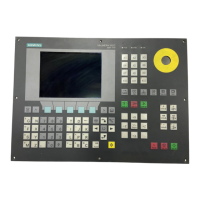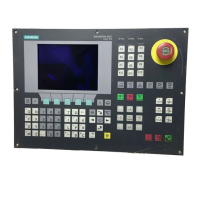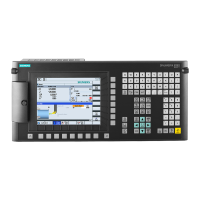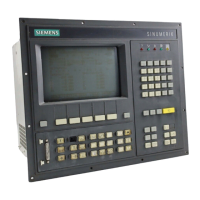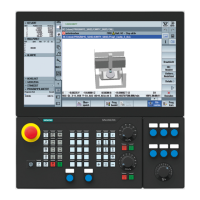NCK start-up
10.5 Parameterize axis data
CNC Part 1 (NCK, PLC, drive)
Commissioning Manual, 11/2006, 6FC5397-2AP10-2BA0
133
Definition of the KV factor
The K
V
factor is defined as the ratio of velocity in m/min and the resulting following error in
mm
>PP@
>PPLQ@
.9
9HORFLW\
)ROORZLQJHUURU
This means for a K
V
factor of 1 that at a velocity of 1m/min, a following error of 1mm results.
Via
• MD32200 POSCTRL_GAIN (K
V
factor)
the K
V
factor of the machine axis is entered.
Note
To adapt the input/output unit of the K
V
factor selected by default to the internal unit [1/s], the
following machine data are assigned by default:
• MD10230 SCALING_FACTORS_USER_DEF[9] = 16.666667
• MD10220 SCALING_USER_DEF_MASK = 'H200'; (bit no 9 as hex value).
When entering the K
V
factor it is important to note that the gain factor of the whole position
control loop is still dependent on other parameters of the controlled system.
These factors include, among others:
• MD32260 RATED_VELO
• MD32250 RATED_OUTVAL
For drive optimization see
Introduction (Page 177)
Notice
Machine axes that interpolate one with another must have the same following error at the
same velocities.
This can be achieved by setting the same K
V
factor or dynamic response adaptation in:
• MD32900 DYN_MATCH_ENABLE
• MD32910 DYN_MATCH_TIME
The real K
V
factor can be checked with the following error in the service display.
• e.g., HMI Advanced: Operating area "DIAGNOSIS" > Service displays > Service axis.

